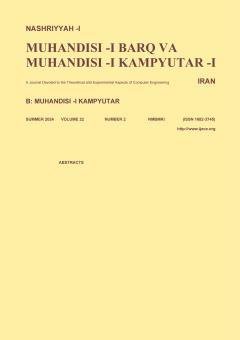-
-
List of Articles
-
Open Access Article
1 - A New Green Optimal Routng Algorithm in Data Communication Networks
Mohsen Heydarian Fariba Darvishiyan -
Open Access Article
2 - A Novel Approach based on Chaotic Mapping for Implementing Security Phases on Cloud Computing
Azita Rezaei Ali Broumandnia Seyed Javad Mirabedini -
Open Access Article
3 - Community Detection in Complex Networks Using Minimum Spanning Tree and Modularity Maximization
sondos bahadori maryam nooraei -
Open Access Article
4 - Event-Driven Distributed Trust Model for Internet of Things Network
Zahra Hadian Fazllolah Adibnia وحید رنجبر -
Open Access Article
5 - Predicting ratings in recommender systems considering the dynamics of users’ preferences dynamics and changes in items' characteristics
Hamidreza Tahamsbi -
Open Access Article
6 - Dynamic Energy Consumption Reduction Algorithm for Mixed Critical Real-Time Systems with Multi-Core Processors
seyed hassan sadeghzadeh -
Open Access Article
7 - An Effective Application of Fractional Optimal Control in the Treatment of Infectious Diseases
Amin Jajarmi Manijeh Hasanabadi
-
The rights to this website are owned by the Raimag Press Management System.
Copyright © 2017-2025







